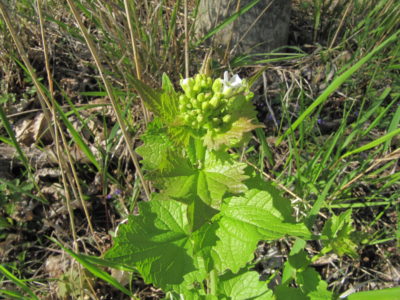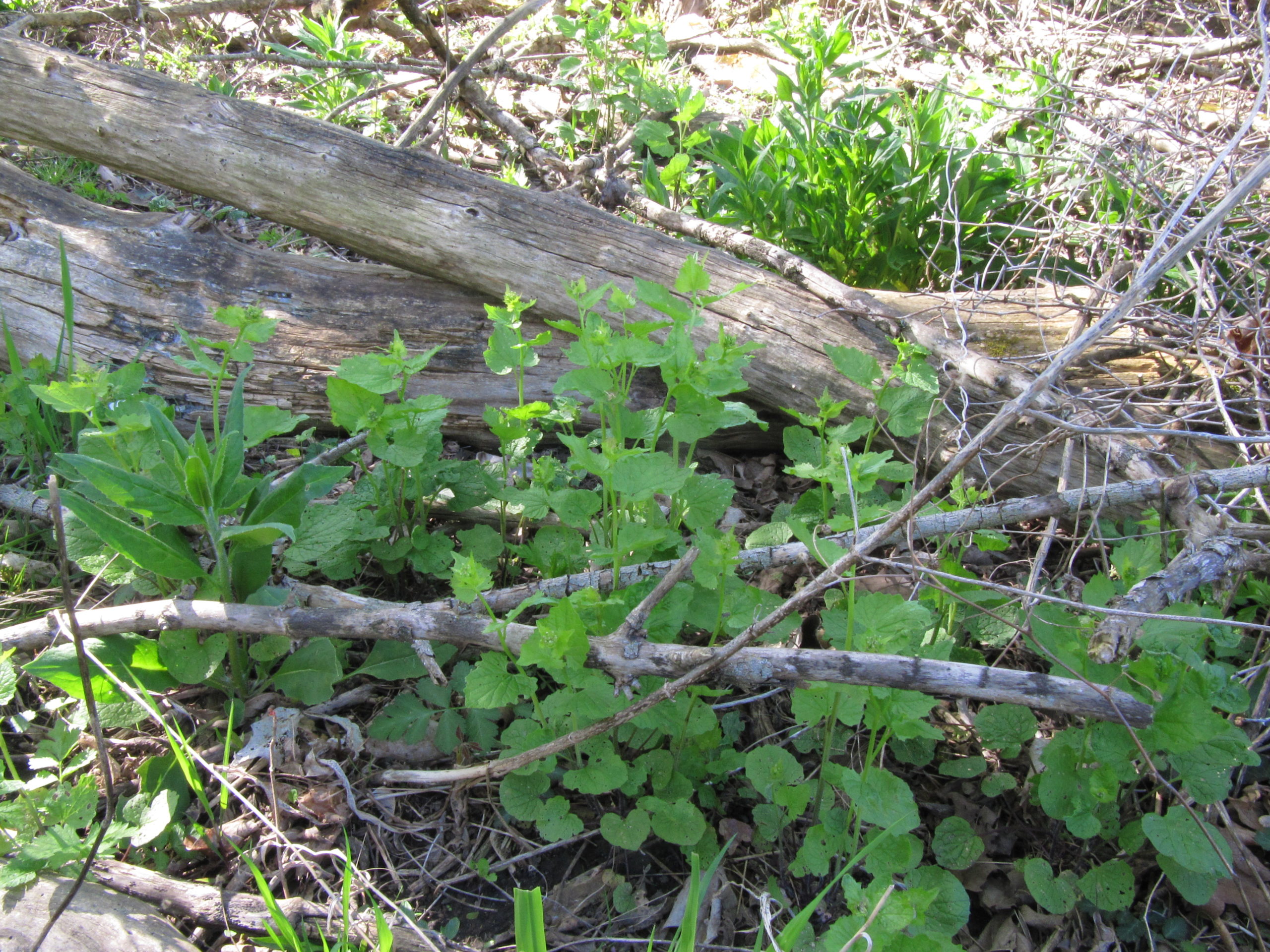If you are headed outside for exercise in areas near home or at Michigan Audubon sanctuaries, consider giving some of your time to improve the health of nature surrounding you at the same time: be a garlic mustard volunteer! Garlic mustard, a noxious weed and aggressive invasive plant species, is quick to overtake natural areas where it becomes established. Many of Michigan Audubon sanctuaries have areas with garlic mustard that we work to control through volunteer days — pulling this herbaceous plant out by hand in spring and early summer. Unfortunately, this spring we are unable to hold volunteer gatherings due to COVID-19, and would like to encourage you to do some pulling on your own if you’re headed out to trails local to you!
 Garlic mustard is fairly easy to identify! It is a member of the mustard family, with no close look-alikes. Garlic mustard has leaves that, when crushed, smell a bit like garlic. The leaves have somewhat toothed edges, and are roughly heart-shaped. Once you learn to identify garlic mustard, you’ll likely see it in many places — in wooded areas, underneath shrubs that have yet to leaf out, on edges of meadows, and especially along trails where seeds may have spread by hikers and walkers. Garlic mustard seeds are pretty small and are easily transported if stuck to the bottoms of your shoes or boots along with some mud. Something to consider, to reduce your own unintentional spread of garlic mustard and other invasive plant seeds, is to clean off the bottoms of your footwear after each hike so that the next place you visit will not receive undesired seeds. PlayCleanGo has some great ideas on how to prevent invasive species from spreading.
Garlic mustard is fairly easy to identify! It is a member of the mustard family, with no close look-alikes. Garlic mustard has leaves that, when crushed, smell a bit like garlic. The leaves have somewhat toothed edges, and are roughly heart-shaped. Once you learn to identify garlic mustard, you’ll likely see it in many places — in wooded areas, underneath shrubs that have yet to leaf out, on edges of meadows, and especially along trails where seeds may have spread by hikers and walkers. Garlic mustard seeds are pretty small and are easily transported if stuck to the bottoms of your shoes or boots along with some mud. Something to consider, to reduce your own unintentional spread of garlic mustard and other invasive plant seeds, is to clean off the bottoms of your footwear after each hike so that the next place you visit will not receive undesired seeds. PlayCleanGo has some great ideas on how to prevent invasive species from spreading.
 Here’s what to do when you pull garlic mustard:
Here’s what to do when you pull garlic mustard:
When pulling by hand, do your best to pull out the roots completely. Bring a plastic bag with you — you will need to bag the plants you pull and carry out them out with you to a dumpster. Unfortunately, if you pull garlic mustard and leave it on the ground, its seeds will continue to mature and the invasive problem will continue to be an issue. This is also why it is not a good idea to toss it in your compost pile.
If you are an aspiring home cook — guess what! — you can bring garlic mustard home and eat it! Garlic mustard tastes like a garlicky spinach, and can be used as a pesto or sauteed green. More information and some recipes can be found at: foragedfoodie.blogspot.com/2013/05/why-you-should-forage-eat-garlic.html and eattheinvaders.org/garlic-mustard/
To learn more about garlic mustard and its negative impacts to habitats, visit: habitatmatters.org/garlic-mustard.html
You can learn more about pulling garlic mustard from Conservation Program Coordinator Linnea Rowse in this short video from Earth Day 2020.

